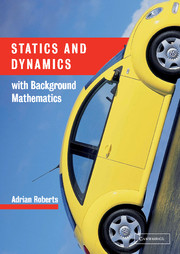5 - Trusses
Published online by Cambridge University Press: 05 June 2012
Summary
Method of sections
A truss is a vertical framework of struts connected together at their ends so as to form a rigid structure, even when the connections are smooth hinge points. We shall assume that the structure is light compared with any supported loads. Thus, in the truss shown in Figure 5.1, we will neglect the weight of the struts which is assumed to be small compared with the load L. Furthermore, all the joints will be regarded as hinge points, i.e. any moments exerted at the joints are small enough to be neglected. This means that a strut will exert a force at a joint in the direction of the length of the strut. This force will be a push if the strut is in compression or a pull if it is in tension.
Finally, we shall only consider trusses with no redundant struts. In other words, the truss would collapse under the action of the load if any one strut were removed. Such a structure may be built up as a series of triangles. The struts need not have the same length, so the triangles need not be equilateral, as in Figure 5.1. However, there is a relation between the number s of struts and the number j of joints. For one triangle, s = j = 3. Then for each triangle added after that, there are two extra struts and one extra joint. It follows that s = 2j − 3.
Information
- Type
- Chapter
- Information
- Statics and Dynamics with Background Mathematics , pp. 70 - 84Publisher: Cambridge University PressPrint publication year: 2003
Accessibility standard: Unknown
Why this information is here
This section outlines the accessibility features of this content - including support for screen readers, full keyboard navigation and high-contrast display options. This may not be relevant for you.Accessibility Information
- 1
- Cited by
